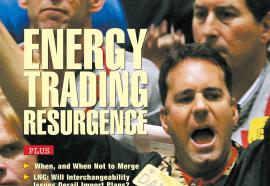The Top Utility Stocks
A review of total shareholder returns shows how growth and merger strategies drove performance last year.
To better understand the performance of the electric utility sector from both a short-term and long-term perspective, we examined the total shareholder return (TSR)—dividends plus change in stock price—of 58 electric companies for 2005 and for three- and five-year periods. We grouped these companies into four categories to better understand the impact of alternative strategies on investor performance: Recovering, Traditionalist, Growth, and Merger.







